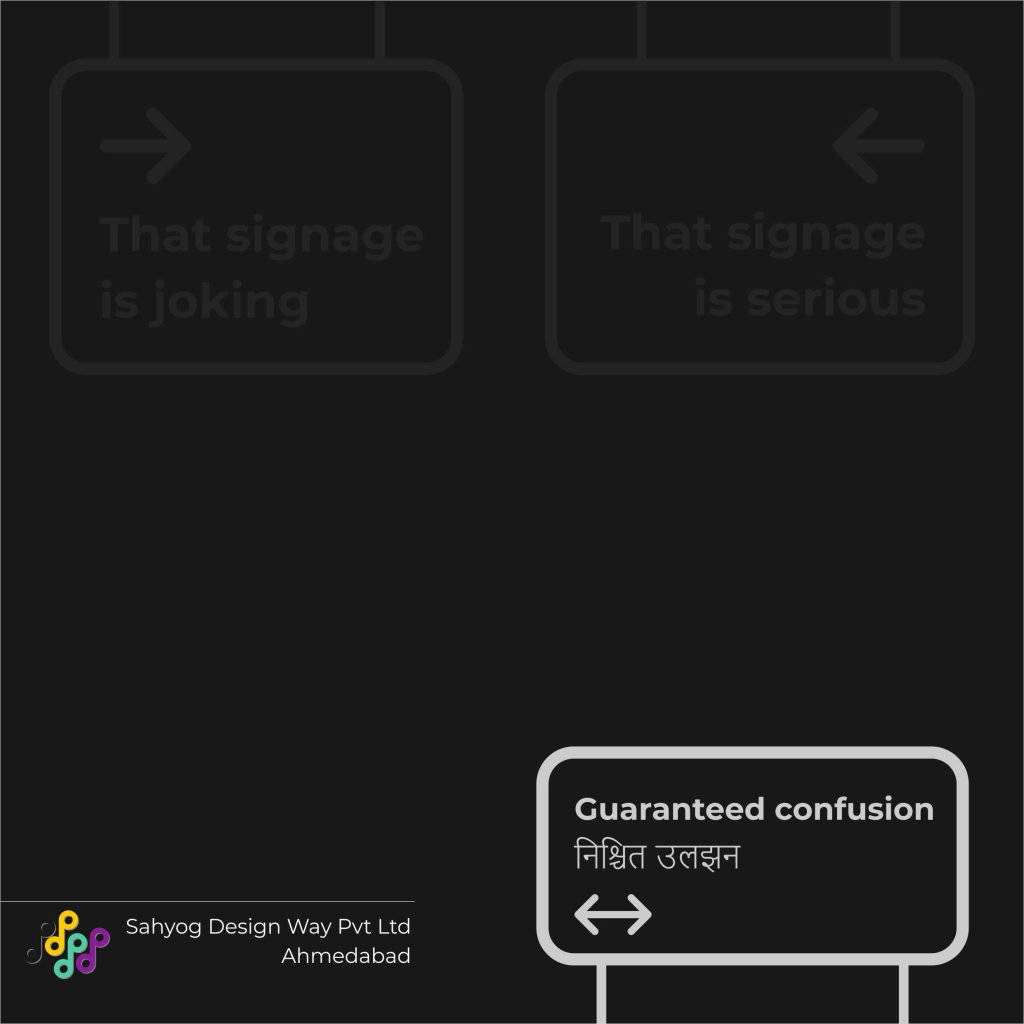
-By Aditya Bharadwaj
Wayfinding is a mother discipline about helping a user navigate through space to get to where they want to go without any difficulty. Sometimes it means marking places with their specific names and symbols which talk about their nomenclature, utility, historical information and significance. Such markings, often put on boards, plates or painted on walls or such surfaces etc., are termed as signages.
Why do we need signages?
Some primary reasons are:
- A user does generally not have a birds-eye-view of space and needs to be guided to various points within this space; the user has to also be guided inside and outside a space properly,
- A user may not know the names of various places and need timely confirmation and feedback so that they do not get lost,
- A user may not be able to see the utilities available inside a building/space from outside and may need this information upfront from outside so as to decide whether to go in or not,
- A user may not know and thus may want the information related to a particular place which may hold their interest, and there may not another person/medium with authentic information about the same,
- A user may not have all their senses functioning (for example, blind people) and need other sensory information to guide them through space.
Some secondary, intangible but equally important reasons are:
- Good signages and wayfinding help develop a disciplined relationship between a place and its users, paving the way for cleanliness, orderliness, less chaos and traffic and efficiency in the circulation of people, resources and materials
- Good signages and wayfinding build a positive memory about the place in the mind of the user and etch the place into the user’s mind
- Good signages and wayfinding add to the branding value of a place
- Good signages and wayfinding also indicate whether a place is at par with national and international standards of quality
What is the difference between signages and wayfinding?
Signages, for the most part, are physical signs with text, symbols and maps aimed at describing a particular location in its detail. Wayfinding, on the other hand, may involve more subtle interventions like environmental aesthetics and decoration, sensorially distinct elements etc. to guide a user into unconsciously remembering the space, orienting themselves correctly, move in specific ways and know their way to and fro, without having to do or see anything deliberately.
Thus a good signage and wayfinding system relies on the smart, designed usage of both these aspects to finally achieve efficiency and discipline without there being any forceful authority to exert rules.
Which media are used for signages and wayfinding?
Signages can be non-digital or digital or in-between as per the context. They can be made from organic or inorganic, natural or artificial materials. However, signages may get limited due to their necessity of specific type of content. Wayfinding has an almost infinite scope of materials and manifestations, and often require a deeper understanding of human behaviour.
Are there some guidelines towards designing signages?
Yes. Some of them are:
- The text/icon height vs viewing distance has an established relationship model
- The placement of textual/symbolic representation on a vertical plane has guidelines based on cones of vision etc.
- The colours being used on the base material and for the text/symbols follow colour theory to be effective
- The shapes and forms which the signages take follow the guidelines of product design and thus the science of shape and form
- The informational content itself derives its science from graphic design, information theory, semantics and semiotics
- The materials being used follow the rules of engineering, science and manufacturing processes
Are there some guidelines towards designing wayfinding devices?
Yes. Some of them are:
- Human behaviour is a key driving factor and is becoming a reasonably established science
- Sensory perception and cognition has now become a cutting edge science for understanding aspects like visual hierarchy to design sequences etc. of wayfinding devices
- Disciplines like anthropology contribute towards the behaviour of people as individuals and groups, and their manifestations through cultural themes etc.
- The materials of wayfinding devices, again, are driven by the rules of engineering, science and manufacturing
Thus, signages and wayfinding have become a reasonably exact science and can be implemented quickly for basic functional value, as well as through a well-researched methodology towards an elaborate scheme.
